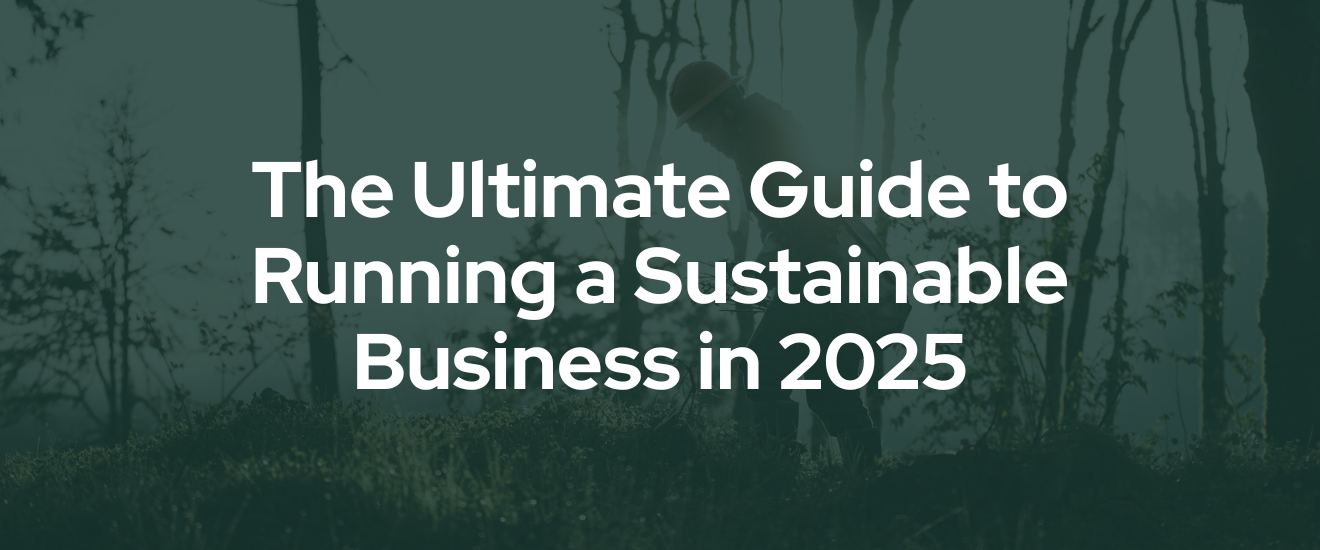The Ultimate Guide to Running a Sustainable Business in 2025
A practical, up-to-date playbook for purpose-driven founders and brands
Whether you're just launching or looking to future-proof your business, 2025 is the year to get serious about reducing your footprint and building long-term value.
This guide outlines the most impactful strategies for running a sustainable business this year.
It includes tools, examples, and real-world tactics for every stage of the business, from sourcing and operations to marketing and post-purchase impact.
Why Sustainability Matters for Growth
Today’s consumers are choosing brands that align with their values. In fact:
- 82% of shoppers say they want brands to reflect their personal values (IBM, 2022)
- 65% are willing to pay more for sustainable products (NielsenIQ, 2023)
- Companies that embed ESG factors grow faster and attract more talent (McKinsey, 2024)
Sustainability isn’t a niche concern anymore. It’s a smart business strategy that improves brand loyalty, conversion rates, and investor appeal.
1. Start With a Sustainability Audit
Before you change anything, understand where you are. A sustainability audit helps you assess:
- Product materials
- Manufacturing or sourcing processes
- Shipping and packaging
- Waste, emissions, and energy use
- Marketing claims and transparency
You don’t need to fix everything overnight. Pick one area with the biggest potential for improvement and start there.
🧼 Example: A beauty brand might start by switching to refillable containers, while a CPG brand might begin with lower-impact shipping materials.
2. Choose Suppliers and Materials That Match Your Mission
The supply chain is often where the biggest environmental impact occurs. Ask your suppliers:
- Where are the materials sourced?
- Are they third-party certified (GOTS, FSC, Fair Trade)?
- What’s the carbon footprint of shipping?
Use platforms like EcoCart, CarbonChain, or Open Supply Hub to trace and reduce supply chain emissions.
🌱 Pro tip: Transparency wins trust. Sharing where your materials come from (even imperfectly) sets you apart from greenwashing competitors.
3. Use Impact Partners to Deliver and Track Environmental Action
Adding verified impact to every order is one of the simplest and most visible ways to reduce your footprint and give back.
With platforms like Ecodrive, businesses can:
- Plant trees in wildfire-affected regions
- Remove plastic from U.S. coastlines
- Restore kelp forests
- Fund clean drinking water in rural areas
- Support food recovery and waste reduction
Best of all, these actions are tied to each order, creating a trackable, customer-facing sustainability story.
4. Minimize Waste in Operations and Packaging
The easiest place to start? Packaging. Consider:
- Switching from plastic to recyclable or compostable materials
- Eliminating unnecessary inserts
- Using carbon-neutral shipping services (like Sendle or UPS Carbon Neutral)
- Offering refills, repairs, or take-back programs
You can also set internal reduction targets for waste and emissions.
📦 Example: A New York-based apparel brand saved over $10,000 annually by redesigning its shipping boxes to use less material and reduce dimensional shipping fees.
5. Align Marketing With Your Mission (Without Overstating It)
Consumers are skeptical of sustainability claims—so your messaging must be specific, transparent, and humble.
Instead of saying “We’re sustainable,” try:
- “Each order removes 1 lb of plastic from the ocean.”
- “We use FSC-certified paper in all packaging.”
- “We’re working toward zero-waste by 2027.”
This makes your message more credible and more actionable. Avoid greenwashing by linking to real results, certifications, and third-party partners.
6. Prioritize Lifecycle Thinking
Don’t just focus on what you sell—consider what happens after.
Ask:
- Can the product be reused, recycled, or refilled?
- Does the packaging go to landfill?
- Are you educating customers on how to dispose of it?
More brands are shifting to circular models that extend product life, reduce waste, and improve customer retention.
🪥 Example: A personal care brand offering a refill pouch system saw both environmental and financial wins, with a 24% increase in repeat purchases.
7. Involve Your Team and Customers in the Journey
Sustainability is a team sport. Involve your employees and customers in your goals:
- Offer impact tracking dashboards
- Celebrate milestones together
- Launch customer engagement campaigns (like Plastic Free July)
- Host internal impact days or donation matches
Customers who feel like they’re part of the mission are more likely to return, refer friends, and spread your message.
8. Measure and Report Your Progress
Track your efforts using tools like:
- Ecocart (carbon offset tracking)
- Sustain.Life (ESG dashboards)
- Ecodrive (impact per order, with visual data and verified stats)
- LCA (lifecycle assessment) tools for products and packaging
Reporting helps you:
- Stay accountable
- Attract B2B partners
- Get press and investor interest
- Build credibility with your audience
Even simple reports or transparency pages on your site can make a big impact.
Final Thoughts
Running a sustainable business in 2025 is about progress.
Start with the steps that feel most achievable, and build from there. With each change, you’ll reduce your environmental footprint, strengthen your brand, and create more long-term value.
And remember: you don’t have to do it alone.
Platforms like Ecodrive help businesses take real environmental action, while giving you the tools to tell the story authentically and clearly.












